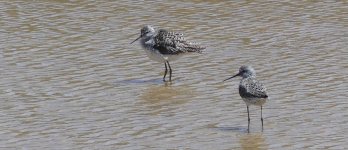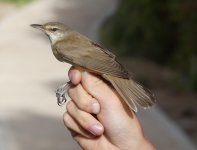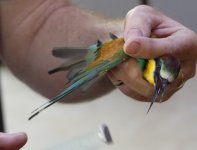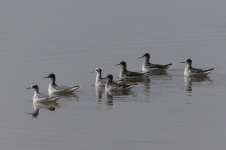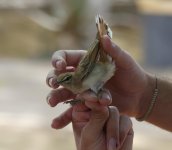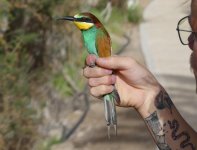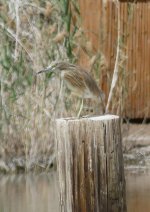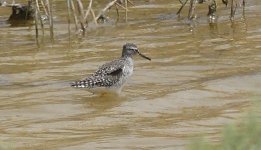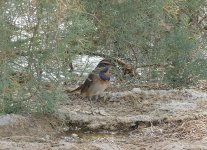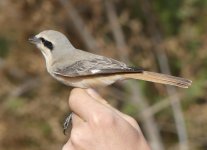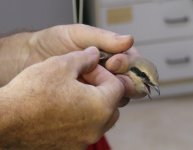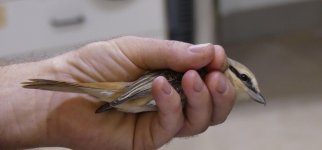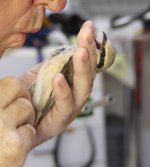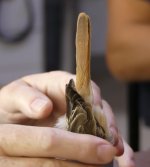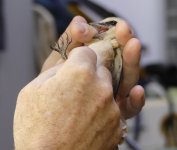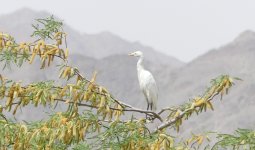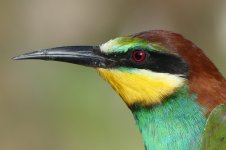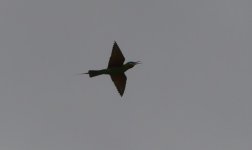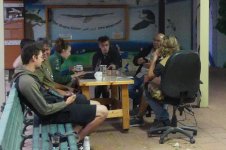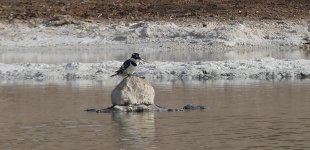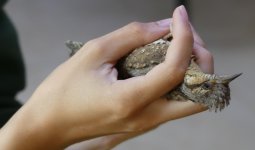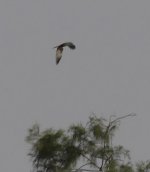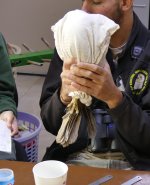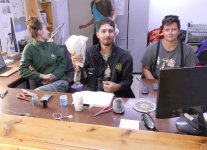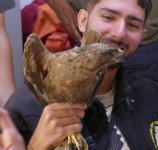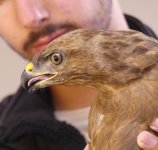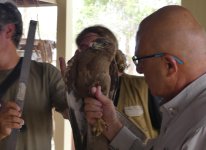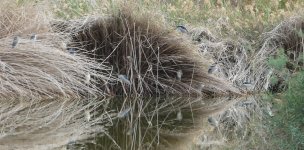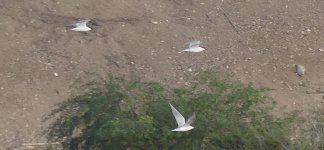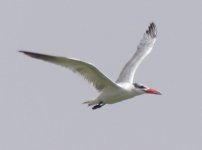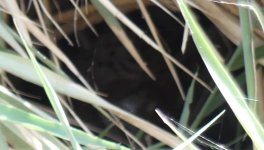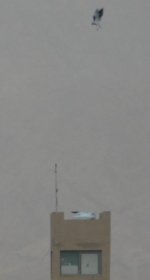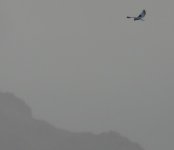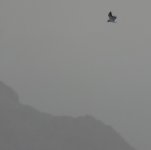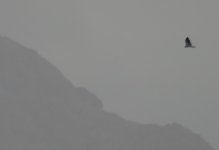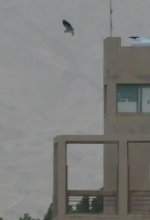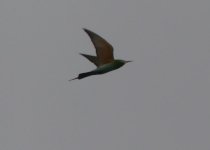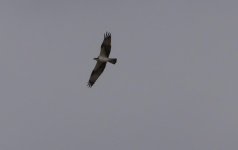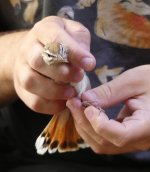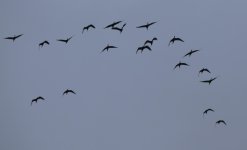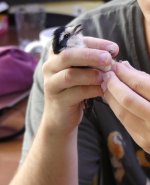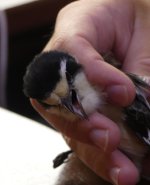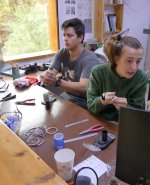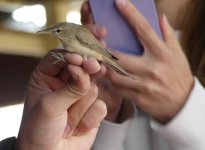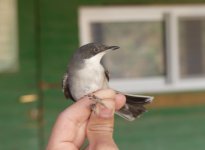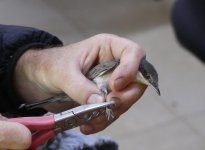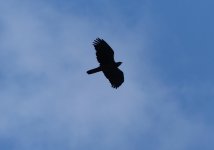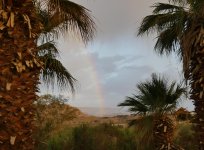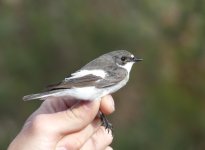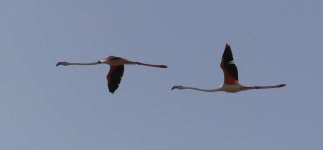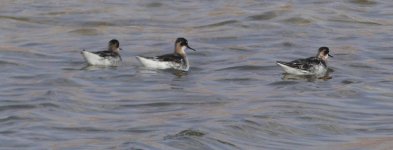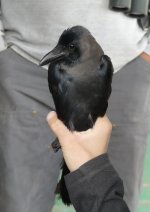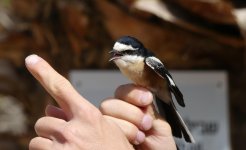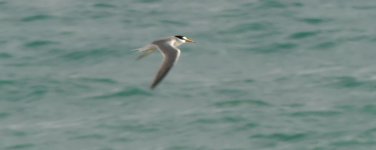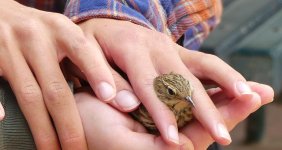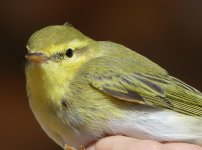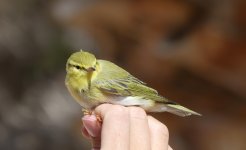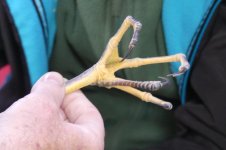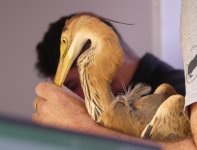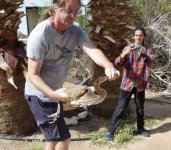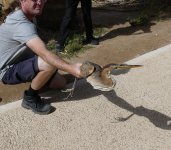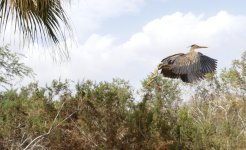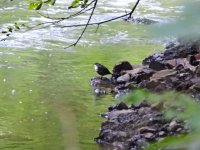rollingthunder
Well-known member

A summary of the last 4 days Sat 8th - Tue 11th April.
3 days of temperatures between 30-35c absolutely knackered me so it was game over and beer o’clock anytime between 1 and 2 pm. By then I have put in about 8 hours including cycling which is far more than I generally put in back at home in a more equable scenario. Sat and Sun were relatively still but yesterday the wind picked up in the afternoon from the South to between 15-20mph which is blowy and uncomfortable. A returning headwind is not needed no matter how warm the bloody thing is. The forecast last night was for heavy rain with thunder and lightning. We didn’t really get much but a light shower around 7pm at Eilat but the nearby mountains got a pasting as did anywhere North to the Dead Sea and beyond. Natanil, who lives in a kibbutz near KM76 had his house flooded as did virtually everybody else. They have an emergency procedure whereby the ground floor has nothing fixed. Stuff is moved upstairs, both front and back doors are opened and let gravity do the rest. They have either concrete or tiled floors and already his Mother was mopping the floors with soapy stuff as the surge passed. The mountain roads were closed as were sections of the N90. 3 years ago a dozen or so members of a teenage school party were swept to their deaths on the outskirts of Eilat despite having both teachers and a guide (who also drowned). The threat of death by flash-flooding is very real around here. The landscape has very little in the way of either absorbing sudden downpours or vegetation to slow the stuff down. It was fingers crossed that it might produce stalled migrants today which has been cloudy with a corresponding 10c drop in temperatures and the first day I have worn a light fleece to bird.
Birds have been thin in the air and birders thin on the ground. For 2 days, after ringing, I have been almost the only birder on site - can you imagine having either Minsmere or Cley to yourself? Hardly any reports coming back as there are so few visitors. Ringing over the last week has averaged about 25 per day with half being retraps. It has been hard finding a non-resident passerine that isn’t sporting bling. Today was an uptick with 75 rung and only 5 retraps.
They included:
Eastern Olivaceous Warbler
Eastern Bonelli’s Warbler
Barn Swallow
Willow Warblers
Rufous Bush Robin
No less than 4 Masked Shrikes
A large female Steppe Buzzard - they don’t catch many raptors in the mist nets larger than either a Sparrowhawk or Scops Owl as they put out a special type for Buzzards and Eagles.
The lagoons held 50+ Little Stint down from the 150+ on Saturday, 2 Caspian Terns and a brief party of 5 Gull-billed than went almost straight through. Slender-billed Gulls numbered about 150 and Red-necked Phalaropes remained at 14. A late-morning Osprey and a circling group of 15 Glossy Ibis did not linger. Waders on the ‘canal’ changed hourly with double figures each of both Wood and Green Sand, a coupla Marsh Sand, Greenshank and my first Curlew Sand of the trip. 2 calling Whimbrel were another trip tick. Someone clicked with 3 Collared Prats. I managed another Masked Shrike that had evaded the nets and an unshackled Rufous Bush Chat. Several Feldeggs and a male Citrine padded out the passerines. From the hide I managed another guided Namaqua missile following yesterday’s individual. A mix of Rock Martin, Sand Martin and a few Rumpers chased a passing female Marsh Harrier whilst another male was seen later. Slightly ‘buzzy’ Bee Eaters descended and became ca25 Blue-cheeked that fed around me for 10 mins - it’s been about 10 years since I clicked with the species in Ouzarzate, Maroc, so it so it was high time for a reunion. Around midday I checked the canal again and saw a Pied Kingy hovering over near the Jordan border which dropped out of site and replaced by a similar-coloured bird much larger - hello Black-shouldered Kite! I did a double-take but Kingy reappeared briefly. A distant Kestrel beat its way towards me and turned into a smart male Lesser. Upon seeing the Kite it peeled off like a Spitfire and stooped at the bandit from out of the Sun before scything its way North…..all good fun.
Down at South Beach last nite a few Swinhoe’s dots were seen and what must have been a fairly easy in any plumage to ID Brown Booby as there are no Gannets at present - it’s too far for me.
Good birding -
Laurie -
3 days of temperatures between 30-35c absolutely knackered me so it was game over and beer o’clock anytime between 1 and 2 pm. By then I have put in about 8 hours including cycling which is far more than I generally put in back at home in a more equable scenario. Sat and Sun were relatively still but yesterday the wind picked up in the afternoon from the South to between 15-20mph which is blowy and uncomfortable. A returning headwind is not needed no matter how warm the bloody thing is. The forecast last night was for heavy rain with thunder and lightning. We didn’t really get much but a light shower around 7pm at Eilat but the nearby mountains got a pasting as did anywhere North to the Dead Sea and beyond. Natanil, who lives in a kibbutz near KM76 had his house flooded as did virtually everybody else. They have an emergency procedure whereby the ground floor has nothing fixed. Stuff is moved upstairs, both front and back doors are opened and let gravity do the rest. They have either concrete or tiled floors and already his Mother was mopping the floors with soapy stuff as the surge passed. The mountain roads were closed as were sections of the N90. 3 years ago a dozen or so members of a teenage school party were swept to their deaths on the outskirts of Eilat despite having both teachers and a guide (who also drowned). The threat of death by flash-flooding is very real around here. The landscape has very little in the way of either absorbing sudden downpours or vegetation to slow the stuff down. It was fingers crossed that it might produce stalled migrants today which has been cloudy with a corresponding 10c drop in temperatures and the first day I have worn a light fleece to bird.
Birds have been thin in the air and birders thin on the ground. For 2 days, after ringing, I have been almost the only birder on site - can you imagine having either Minsmere or Cley to yourself? Hardly any reports coming back as there are so few visitors. Ringing over the last week has averaged about 25 per day with half being retraps. It has been hard finding a non-resident passerine that isn’t sporting bling. Today was an uptick with 75 rung and only 5 retraps.
They included:
Eastern Olivaceous Warbler
Eastern Bonelli’s Warbler
Barn Swallow
Willow Warblers
Rufous Bush Robin
No less than 4 Masked Shrikes
A large female Steppe Buzzard - they don’t catch many raptors in the mist nets larger than either a Sparrowhawk or Scops Owl as they put out a special type for Buzzards and Eagles.
The lagoons held 50+ Little Stint down from the 150+ on Saturday, 2 Caspian Terns and a brief party of 5 Gull-billed than went almost straight through. Slender-billed Gulls numbered about 150 and Red-necked Phalaropes remained at 14. A late-morning Osprey and a circling group of 15 Glossy Ibis did not linger. Waders on the ‘canal’ changed hourly with double figures each of both Wood and Green Sand, a coupla Marsh Sand, Greenshank and my first Curlew Sand of the trip. 2 calling Whimbrel were another trip tick. Someone clicked with 3 Collared Prats. I managed another Masked Shrike that had evaded the nets and an unshackled Rufous Bush Chat. Several Feldeggs and a male Citrine padded out the passerines. From the hide I managed another guided Namaqua missile following yesterday’s individual. A mix of Rock Martin, Sand Martin and a few Rumpers chased a passing female Marsh Harrier whilst another male was seen later. Slightly ‘buzzy’ Bee Eaters descended and became ca25 Blue-cheeked that fed around me for 10 mins - it’s been about 10 years since I clicked with the species in Ouzarzate, Maroc, so it so it was high time for a reunion. Around midday I checked the canal again and saw a Pied Kingy hovering over near the Jordan border which dropped out of site and replaced by a similar-coloured bird much larger - hello Black-shouldered Kite! I did a double-take but Kingy reappeared briefly. A distant Kestrel beat its way towards me and turned into a smart male Lesser. Upon seeing the Kite it peeled off like a Spitfire and stooped at the bandit from out of the Sun before scything its way North…..all good fun.
Down at South Beach last nite a few Swinhoe’s dots were seen and what must have been a fairly easy in any plumage to ID Brown Booby as there are no Gannets at present - it’s too far for me.
Good birding -
Laurie -




